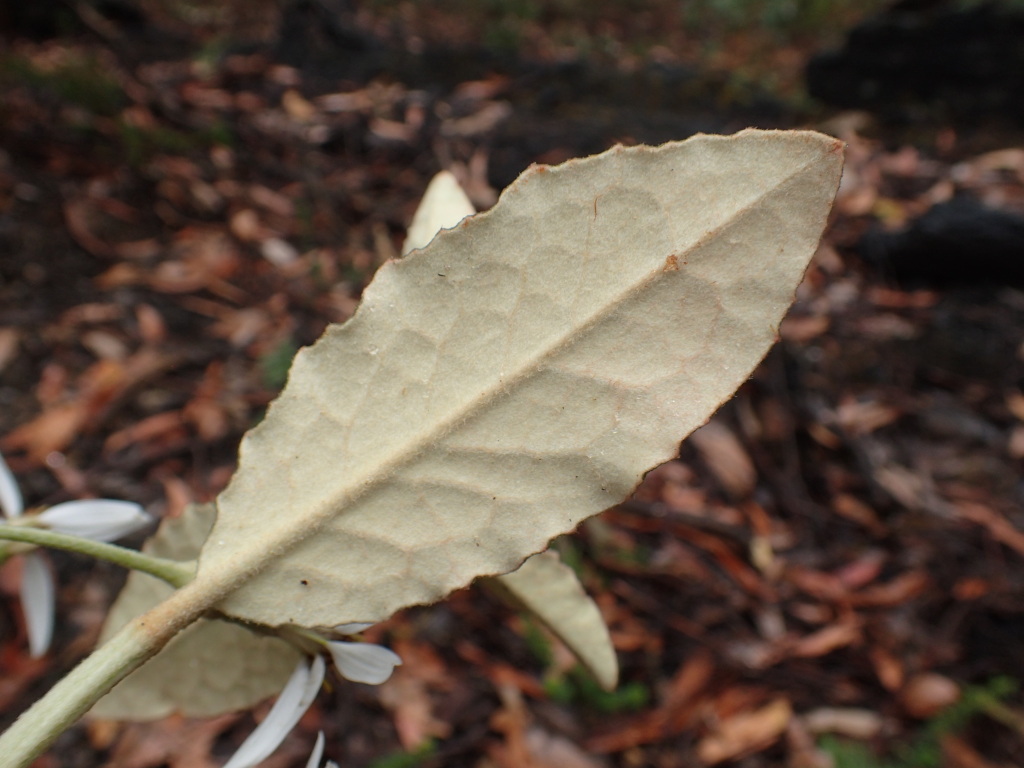Olearia speciosa
Hutch.Open shrub to c. 1 m high; branchlets and leaf undersurfaces densely tomentose with white to fawn or pinkish, Y-shaped hairs. Leaves alternate (very rarely opposite), subsessile to petiolate, ovate to elliptic, 20–80 mm long, 8–40 mm wide, obtuse to broadly acute, upper surface dark green, finally glabrous or remaining tomentose about the midrib, conspicuously reticulate-veined; margin distantly serrate to biserrate, flat or undulate; petiole to c. 1 cm long. Capitula 22–35 mm diam., in loose corymbs; peduncles usually 10–50 mm long; involucre broadly conical, 7.5–10 mm long; bracts 3–4-seriate, graduating, tomentose to sericeous. Ray florets usually 4–7, white, ligules 9–13 mm long; disc florets 10–14, yellow or brownish. Cypsela cylindric, 6-ribbed, 3–4 mm long, glabrous; pappus bristles straw-coloured or pinkish, 4.5–6 mm long. Flowers Nov.–Jan.
GleP, Brid, VVP, GipP, OtP, WaP, Gold, CVU, GGr, HSF, HNF, OtR, MonT, VAlp. Apparently endemic. Scattered in cool, well-watered areas from near sea-level in the far south-west to montane forest in western and central ranges (e.g. Lower Glenelg National Park, Mt William and Major Mitchell Plateau, Mt Cole, Wonga Forest near Colac, Matrock, Murrindindi, and Mount Wellington).
A poorly known species with affinities to O. argophylla, O. erubescens and O. megalophylla, and some specimens possibly of hybrid origin. From the first two it differs in the larger capitula and woolly rather than appressed indumentum, and from the third it differs in having alternate (very rarely opposite), toothed leaves. The majority of records of this species in eastern Victoria are likely to be hybrids involving the species discussed above.
Walsh, N.G.; Lander, N.S. (1999). Olearia. In: Walsh, N.G.; Entwisle, T.J., Flora of Victoria Vol. 4, Cornaceae to Asteraceae, pp. 886–912. Inkata Press, Melbourne.
 Spinning
Spinning